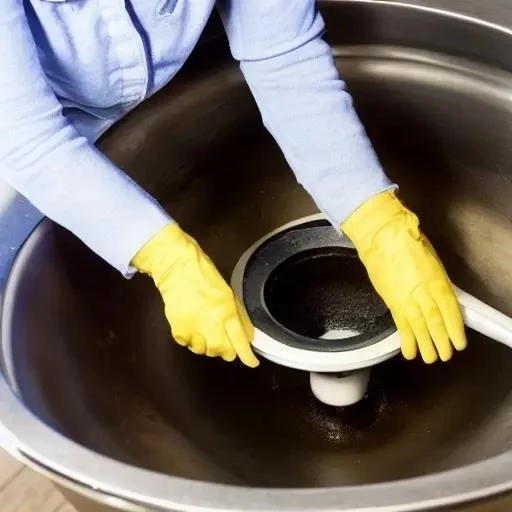The kitchen, often hailed as the heart of the home, pulsates with daily activity, from morning coffee rituals to elaborate dinner preparations; Yet, beneath its gleaming surfaces lies a silent potential for disruption: the humble kitchen sink drain. A sudden gurgle, a sluggish flow, or a complete standstill can instantly transform a vibrant culinary space into a source of considerable frustration. This common household challenge, often met with immediate exasperation, can now be approached with newfound confidence and practical expertise, empowering every homeowner to tackle these predicaments head-on.
For too long, the sight of a stubbornly clogged or leaking kitchen sink drain has conjured images of expensive plumber call-outs and inconvenient delays. However, a modern paradigm shift is underway, moving away from reactive panic towards proactive mastery. By integrating insights from seasoned plumbing professionals and leveraging remarkably effective DIY techniques, individuals are increasingly equipped to not only diagnose but expertly resolve even the most tenacious drain issues. This article unveils the comprehensive strategies and essential knowledge required to effectively undo your kitchen sink drain, ensuring uninterrupted functionality and a perpetually harmonious kitchen environment.
| Category | Detail |
|---|---|
| Common Components | Strainer/Basket: Prevents large particles from entering the drain. Flange: The rim that seals the strainer to the sink basin. Tailpiece: Connects the sink to the P-trap. P-Trap: Water-filled bend preventing sewer gases and catching debris. |
| Typical Issues | Grease Buildup: A primary culprit for slow drains and blockages. Food Particles: Coffee grounds, rice, pasta expanding in pipes. Foreign Objects: Accidental drops causing immediate obstructions. Corrosion/Rust: Degradation of older drain components leading to leaks or blockages. |
| Essential Tools for DIY | Plunger: Your first line of defense for suction-based clearing. Pipe Snake/Auger: For reaching and dislodging deeper blockages. Adjustable Wrench: Indispensable for loosening various plumbing nuts. Flathead Screwdriver & Hammer: For carefully prying stubborn strainers. Bucket: An essential companion to catch water during disassembly. |
| Reference for Further Info | Dummies.com ‒ How to Fix a Clogged Drain |
Often, the journey to a clear drain begins with identifying the nature of the blockage. Is it a slow drain, suggesting a gradual accumulation of grease and food particles, or a complete stoppage, indicative of a more substantial obstruction? For the former, a simple yet incredibly effective solution often lies in the strategic application of boiling water, followed by a mixture of baking soda and white vinegar. This household alchemy, renowned for its ability to dissolve fatty residues, can remarkably rejuvenate a sluggish system, allowing water to flow freely once more. When confronting a more tenacious clog, however, the trusty plunger emerges as a formidable ally, creating hydraulic pressure to dislodge stubborn impediments.
When basic methods prove insufficient, homeowners are encouraged to explore the underlying mechanics of their sink’s drainage system. Removing the basket strainer, often a simple twist or a gentle pry with a flathead screwdriver and hammer (tapping counter-clockwise into one of its slots), provides vital access. This step is particularly crucial for deploying a plumber’s snake, a flexible auger designed to navigate the twists and turns of the drainpipe, physically breaking apart or retrieving deeper blockages. For issues involving leaky drain baskets or corroded flanges, a complete replacement might be necessary. This process, while seemingly daunting, involves carefully unfastening the nuts beneath the sink, extracting the old assembly, meticulously cleaning the area, and installing a new, watertight unit, often sealed with plumber’s putty for optimal protection.
Looking forward, the true mastery of kitchen sink maintenance transcends mere repair; it embraces diligent prevention. Implementing simple daily habits, such as regularly flushing the drain with hot water after washing dishes, avoiding pouring grease down the sink, and utilizing drain strainers to catch food scraps, can dramatically reduce the frequency of blockages. Furthermore, periodic deep cleaning with natural solutions like baking soda and vinegar can keep pipes remarkably clear and free from undesirable odors. By adopting these proactive measures, homeowners are not just fixing a problem; they are cultivating a resilient and efficient kitchen, ensuring that the heart of their home beats without interruption.






